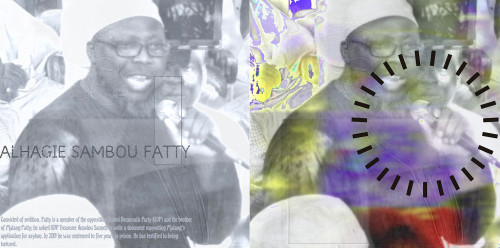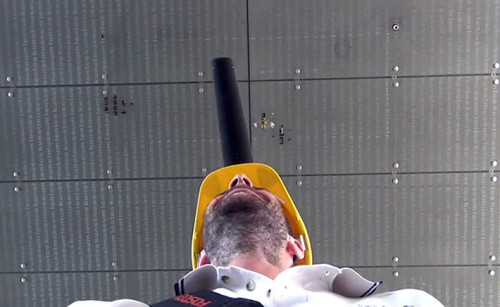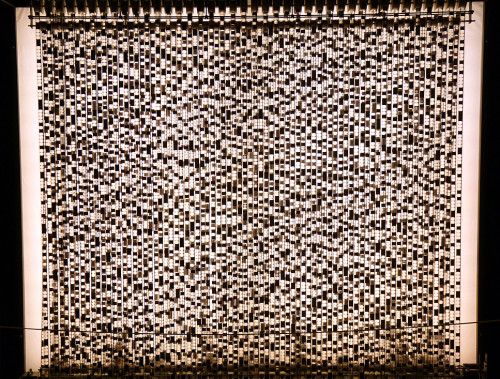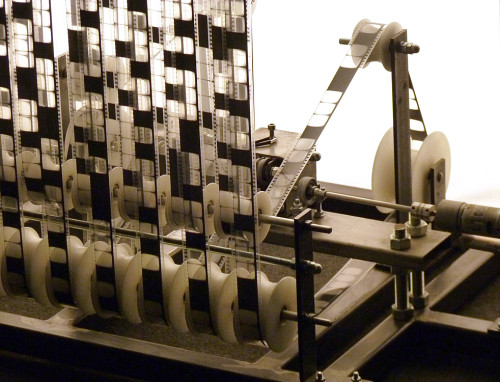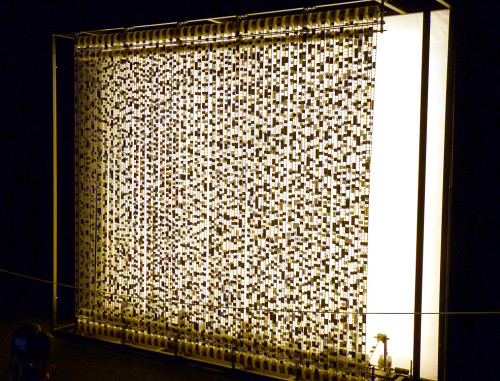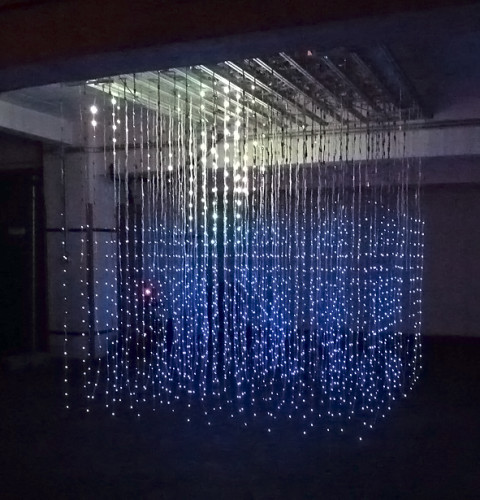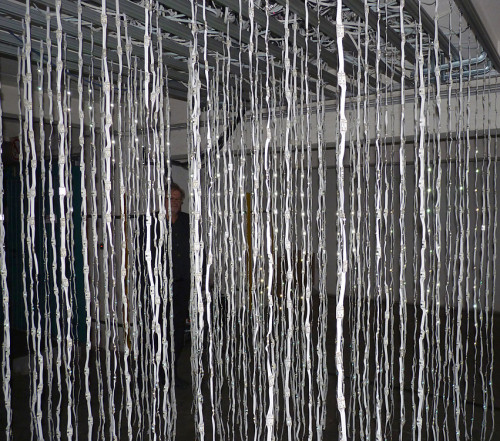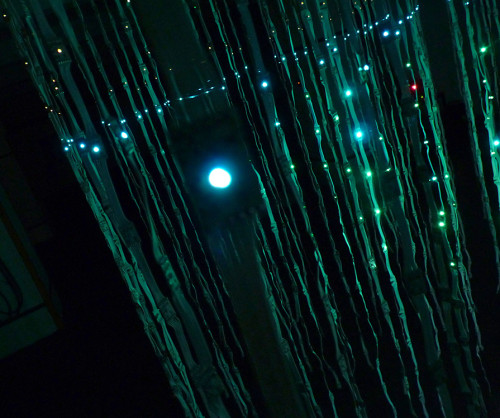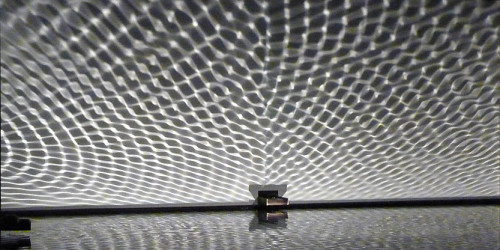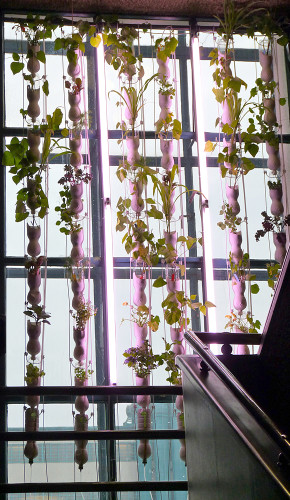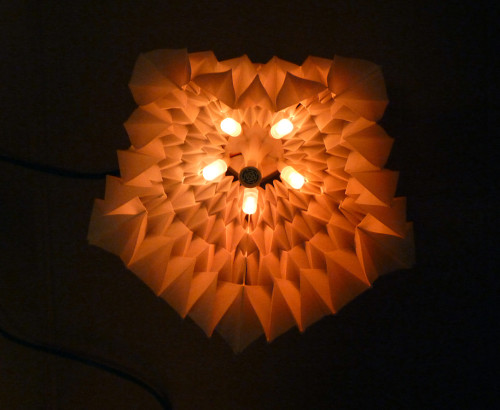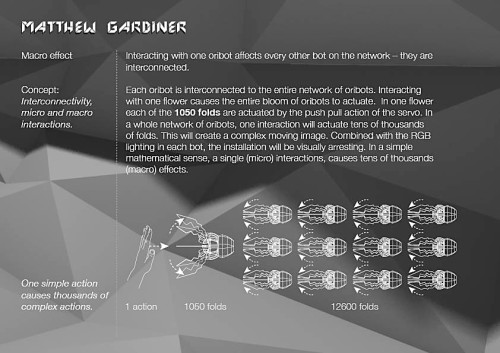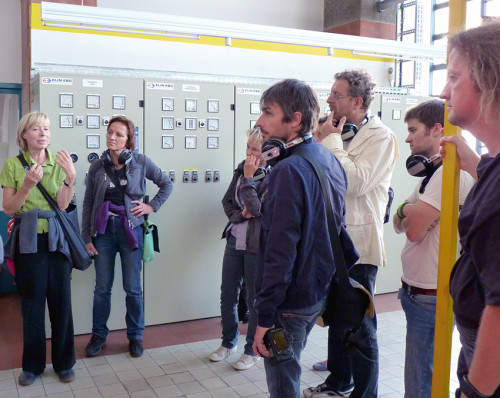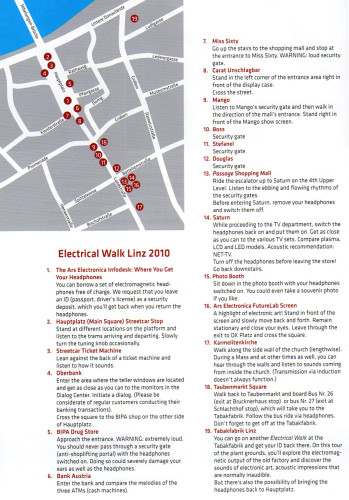Author: rostasi
1905
1794
1956
1925
1789
1877
1918
Phật 34 ⬙ Avbojmahma tyranny
A Balloon for…
Davide Tidoni‘s itinerate project, A Balloon for… brings to life the sound responses of specific spaces. By bursting balloons, the project discovers unique acoustic sites and invites people to explore space through listening. The video below is a version of A Balloon for Linz.
(thanks to Davide Tidoni)
Continuization loop
With Continuization Loop, a single 35mm film loop is pulled up and down over more than 150 guide wheels creating a wall of film. The frames of this piece of film are either black or transparent.
When the loop travels through the mechanism, the image of video static appears.
While film as a medium normally makes images appear through projection in combination with
the transport of celluloid through a projector, this Wim Janssen work omits the projection and
makes the image appear by means of transport alone.
The installation combines and imitates visual elements from three generations of visual media:
the material aspect of film, the empty signal of video and the binary logic of digital.
At the same time, the most important attributes of these media are absent:
there is no construction of an illusory film-space, there is no real video image and
there are no computers involved. The first video is from the artist.
The second is from me. Both are silent.
(thanks to Wim Janssen)
1943
1857
1938
1970
1949
1992
1913
1955
1918
1920
1444
1964
1977
1999
1834
1933
1970
1894
1914
atesokhom
1792
1995
1775
1811
1959
1838
1677
huff a colorcast genie
Ocean of Light: Surface is a responsive virtual eco-system from Squidsoup that occupies a physical space. It uses a room-sized 3D grid of individually addressable points of light to simulate movement in this physical space. The space is dominated by a surface which is a boundary between two fluid virtual materials. The materials are affected by sound. Nearby noises create waves that ripple across the surface. The surface is unstable. The turbulence caused by noise also triggers luminous blasts.
Two videos follow. The second one I decided to shoot from underneath the installation.
Á Rafsegulsvið Jarðar
For the installation Earth 2010, Finnbogi Pétursson creates an interference wave measuring 7.8Hz in a pool of water. The tone, which can be heard and physically detected, is visible on the surface of the water in the form of waves. The frequency of 7.8 hertz corresponds to the physical phenomenon known as the Schumann Resonance, which is the frequency of the Earth’s electromagnetic field. For Pétursson, this frequency represents the primal pulse of our planet. The first video is Pétursson’s own professional video. The second is my fuzzy hand-held that zooms in on the reflected wave patterns.
(thanks to Finnbogi Pétursson)
windowfarms
If you’re indoors, even in a tight little apartment, and you have some natural light streaming through your windows, you can grow your own tasty, healthy food by setting up what Britta Riley calls “windowfarms” – vertically growing hydroponic farms that will grow right in your window and won’t use soil that might take up precious living space. It’s a wonderfully compact system that produces healthy food without making a major carbon footprint.
(thanks to Britta Riley)
ACE HEART-THROB CHARMERS
Computer software analyzes the 12 heartbeats of the members of The Heart Chamber Orchestra in real time with various algorithms turning the data into a living musical score. While the musicians are playing, their heartbeats influence and change the composition and vice versa. Computer graphics are also generated from the same heart data that add a narrative and visual layer to the performance, providing the audience with a multi-layered lateral experience. The heartbeats of the musicians and their relation to each other become audible and visible in a transformative way.
(thanks to The Heart Chamber Orchestra)
REPAIR²
True-born, delicious hot stuff
When you’re inside the Fablab of the Ars Electronica Center, you can see, through a glass wall, the Biolab next door where gene technology is demonstrated using synthetically cloned plants. A 3D printer that is used to produce replications through digital fabrication sits conveniently located nearby. Laterally connecting these two areas, we have the folding of proteins in nature meeting the folding of paper and synthetic fabrics in a field of research known as Oribotics. Working in the Futurelab, Matthew Gardiner has furthered his interest in an area where robotics, nature and origami intersect by creating interactive cyber-flowers called “oribots” that are made of a polyester fabric and contain proximity sensors that not only respond to, say, the presence of your hand, but are also networked to each other causing even small interactions to spread sympathetically amongst the other oribots. A blossom opens, causing 1,050 folds to actuate while electro-reflexes do the same to over 50,000 folds across the installation.
(thanks to Matthew Gardiner)
1960
1960
1936
PRIX FORUM DIGITAL MUSICS AND SOUND ART
One of the delights of the Ars Electronica Festival is attending the various forums where the winners talk about their inspirations for works past, present and future. Here, you’ll get to see what goes on during one of these forums. This year was the first to include the category of “sound art” – a category which joins up with “digital musics” – in order to encourage those that work in this area to submit works for consideration.The forum for this year’s winners was moderated by the excellent sound artist Christina Kubisch who gave a short introduction – speaking a little about the jury process – then introduced this year’s winners, Michel & André Décosterd, Ryoichi Kurokawa, and Martin Bédard, followed by a closing statement. Our first-time meeting was the day before during one of her “electrical walk” tours (of which I’ll speak more of in a later posting) in which we chatted about the influence of Alvin Lucier. It seemed like the perfect setting for me to remind her of John Cage’s 98th birthday that day as well. A longer than usual video for this website, but you’ll be able to not only hear the artists talk about influences and ways of working, but you’ll be introduced to some of their other works that have been featured in other exhibitions.
Elektromagnetische Feldforschungen
My interest in the work of Christina Kubisch goes back a few decades. Ever since the early Italian label recordings, I’ve been steadily adding to my library of audio and text (and in a recent case, DVD) and have frequently found her work to be on the level of people like Alvin Lucier and Maryanne Amacher. Based on the sound art works involving her interest in electromagnetic resonance, she clearly has a fantastic ear for sound. There was a wonderful variety of works that were being offered – pretty much in the following order as you entered and made your way through the Tabakfabrik: her film Wavecatcher; an installation consisting of numbered photos on a wall coupled to an audio guide called Ruhrlandschaften 2010; a multi-channel sound installation, Bewegungen nach entfernten Orten (50 seconds of video appear about 6 minutes into this slideshow) as well as the Electrical Walks tour through various electronically vibrant spaces. We were outfitted with specially created magnetic headphones that made audible the various electromagnetic fields that surrounded us while being personally guided through areas that normally would be closed to the public such as the inside rooms of the on-site power plant or warehouse basement areas as well as normally accessed areas amidst various technology-enhanced artworks on display. We also had the ability to borrow the specialized headphones and create our own walk through the city of Linz. A map was provided suggesting areas of interesting and particularly vibrant sound loci.
During an electrical walk, one of the first things that you notice is the overall change in the psychological dynamic of your physical position in relation to your aural perception. Not only is there no longer the one-to-one correspondence between what you see with what you hear, but the depth of it extends to where the normally unheard is now clearly present while the associated sounds have become just an underlying muffle – if heard at all. For me, this is a beautiful experience because it provides a new perspective that lies almost solely in the realm of what some may call contextual confusion, but what I like to think of as an auditory situational-event. Of the recordings that I’d made, the best was of the single electrical walk through Linz, but I still wish I had made at least one more that had followed a self-devised compositional scheme. This recording seems to present a kind of suite of movements that are not clearly deliniated – which I feel is a positive thing. There becomes a dominant sound that sets a mood as a movement, then slowly, you later find yourself mentally attached to a different kind of movement with a “ground” of sound that can easily lull you into a sense of complacency. For the following audio, you will hear something that lies in-between the above-mentioned compositional scheme and the mapped out version that you see above – something resembling more of an electromagnetic trace of a psychogeographical dérive where a world of security gates, induction loops, WLAN transmitters, ATMs, ticket vending machines, LED tickers, TV screens, and other assorted electrical field generating devices impinge on us in ways that we’ve yet to uncover.
(thanks to Christina Kubisch for the use of the headphones)








